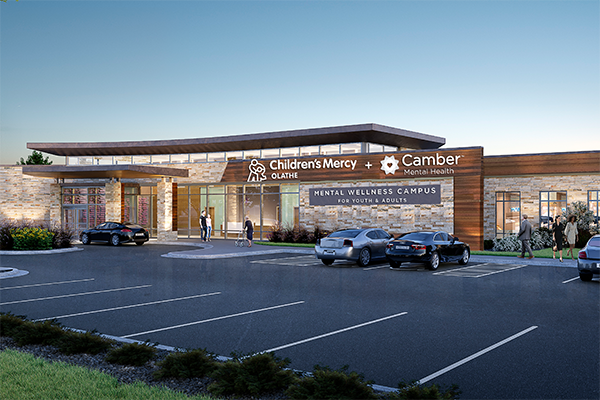Study Reveals Child Hospital Admissions for Suicidal Thoughts, Actions Have Doubled

A recent study shows that the number of children and teens admitted to a psychiatric hospital for suicidal thoughts or actions has doubled over the past decade. The study, which is called “Trends in Suicidality and Serious Self-Harm for Children 5-17 Years at 32 U.S. Children’s Hospital, 2008-2015,” was presented at the 2017 Pediatric Academic Societies Meeting held this past May.
This recent study analyzed administrative data from 32 children’s hospitals across the U.S., revealing that the rate of youth entering a hospital for suicidal thoughts or actions rose from 0.67 percent in 2008 to 1.79 percent in 2015, with the highest increases occurring in older youth ages 12 to 17. According to the Centers for Disease Control (CDC), suicide is the second leading cause of death among adolescents ages 10 to 14 in the United States.
If you or someone you know may be struggling with depression or thoughts of suicide, call KVC at (913) 890-7468 or call the National Suicide Prevention Lifeline at 1-800-273-TALK (8255).
“This increasing need to prevent suicide resulted in KVC Hospitals conducting a detailed organizational self-study at both of our locations,” says KVC Hospitals’ Director of Clinical Services Brittany Kroeger. “This allowed us to see areas that needed improvement and identify what we needed to implement in order to enhance our services and provide a safer environment for our clients. As a result, the Zero Suicide Initiative began two years ago.”
The Zero Suicide Initiative is a commitment to suicide prevention with specific tools and strategies within a health care system. These tools and strategies help to improve patient safety as well as the safety of the clinical support staff who provide care.
“We have looked at environmental changes, additional training, suicide screenings, evidenced-based assessments, and improving protocols for clients with indicators for suicidal thoughts, different observation statues, and better communication within the multidisciplinary team,” said Kroeger.
Why have rates increased?
While the cause of this rate increase is unclear, some important factors are being tied to the rate climb. Researchers looked at when children were being admitted into the hospital and found that the number of suicidality and self-harm cases increased during spring (March-May) and fall (September – November), indicating higher rates of self-harm and suicide during the school year. These rates were at their lowest during the summer months.
Social media can also lead to an increase in anxiety and depression in teens. The consistent feeling of missing out on experiences and cyberbullying can add to a child or teen’s thoughts of depression and anxiety.
“At KVC, we have completed specific programs to help address bullying,” Kroeger said. “We also have been working directly with USD 489, providing trauma-informed training and interventions when working with students.”
Through the partnership with USD 489, KVC works with the S.A.F.E team, which includes members from High Plains Mental Health, St. Francis Community Services, school counselors and teachers who work with the teachers who have children in the classroom who are showing the signs of experiencing trauma through behaviors.
“Together we put a plan in place that allows the child to stay in school, but have interventions that help regulate emotions,” said Kroeger. “Overall the child is allowed to address the trauma and be successful in school. It’s a great group working together to help kids stay in school, be successful and remove the label of the bad kid.”
Therapists and psychologists at KVC Hospitals are on-site to help the children and teens in care with feelings of anxiety, depression and suicidal thoughts. To help share knowledge of suicide prevention strategies, KVC Hospitals is actively working with area school districts to provide consulting on suicide awareness, prevention, trauma-informed care, the impacts of social media and many other topics to improve how schools can support students.
What are the risk factors?
There is no single cause of suicide and multiple factors may impact the risk of suicidal thoughts and actions. Risk factors can include, but are not limited to:
- A family history of suicide or violence
- Alcohol or drug abuse
- Feelings of being alone
- History of mental illness
How can I help someone in need?
It’s important to know how you can help someone who is experiencing thoughts of suicide or self-harm. Make sure to know the warning signs. Here are some indicators and things to watch for:
- Talking about suicide or harming themselves
- Saying “good-bye” to people in their lives
- Giving away valued items or prized possessions
- Researching ways to harm themselves or die by suicide
- Feelings of hopelessness, rage, anger or seeking revenge
- Not hanging out with friends, family or society
- Dramatic or manic mood swings
Additional resources:
- 4 Ways Parents Can Protect Their Teens From Depression and Anxiety
- Exposing the Connection Between Social Media and Teen Suicide
- Suicide Prevention Awareness Month – Dominic’s Story
If you know a child or young adult struggling with depression or experiencing thoughts of self-harm, contact our psychiatric hospitals to learn about treatment at (913) 890-7468, or contact the National Suicide Prevention Lifeline at 1-800-273-TALK (8255) immediately.





